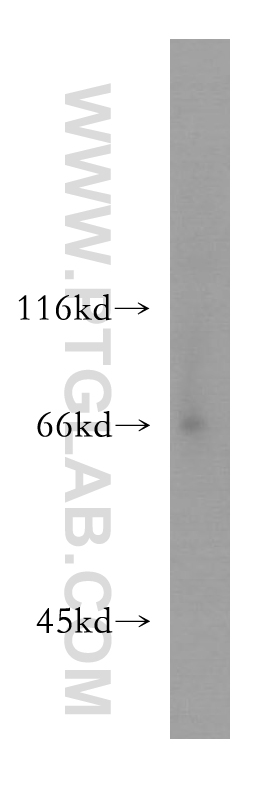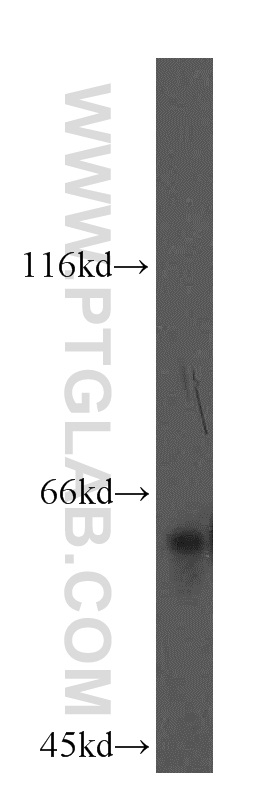验证数据展示
经过测试的应用
| Positive WB detected in | human brain tissue, mouse brain tissue |
推荐稀释比
| 应用 | 推荐稀释比 |
|---|---|
| Western Blot (WB) | WB : 1:500-1:2000 |
| It is recommended that this reagent should be titrated in each testing system to obtain optimal results. | |
| Sample-dependent, Check data in validation data gallery. | |
产品信息
13600-1-AP targets LSAMP in WB, ELISA applications and shows reactivity with human, mouse, rat samples.
| 经测试应用 | WB, ELISA Application Description |
| 经测试反应性 | human, mouse, rat |
| 免疫原 | LSAMP fusion protein Ag4542 种属同源性预测 |
| 宿主/亚型 | Rabbit / IgG |
| 抗体类别 | Polyclonal |
| 产品类型 | Antibody |
| 全称 | limbic system-associated membrane protein |
| 别名 | IgLON family member 3, IGLON3, LAMP, LSAMP |
| 计算分子量 | 338 aa, 37 kDa |
| 观测分子量 | 64-68 kDa |
| GenBank蛋白编号 | BC033803 |
| 基因名称 | LSAMP |
| Gene ID (NCBI) | 4045 |
| RRID | AB_10597712 |
| 偶联类型 | Unconjugated |
| 形式 | Liquid |
| 纯化方式 | Antigen affinity purification |
| UNIPROT ID | Q13449 |
| 储存缓冲液 | PBS with 0.02% sodium azide and 50% glycerol , pH 7.3 |
| 储存条件 | Store at -20°C. Stable for one year after shipment. Aliquoting is unnecessary for -20oC storage. |
背景介绍
LSAMP, also known as LAMP, is a 64-68 kDa heavily glycosylated neural cell adhesion molecule expressed on the neuronal dendrites and somata (PMID: 1688937; 8666243). LSAMP is a member of the IgLON family. The amino acid sequence of LSAMP is highly conserved among species. Human LSAMP shares 99% amino acid sequence identity with rodent LSAMP. The impact of LSAMP protein on neurite outgrowth and neuronal connectivity has been established in a wide spectrum of psychiatric disorders in humans (PMID: 26136648). In mice, lack of LSAMP protein seemingly leads to a deterioration in the ability to adapt to novel stressful environments and stimuli (PMID: 22155487).
实验方案
| Product Specific Protocols | |
|---|---|
| WB protocol for LSAMP antibody 13600-1-AP | Download protocol |
| Standard Protocols | |
|---|---|
| Click here to view our Standard Protocols |

